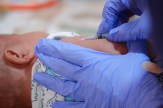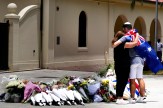Spinal injuries can happen in sports. Physical therapy students are learning how to react fast, even on ice.
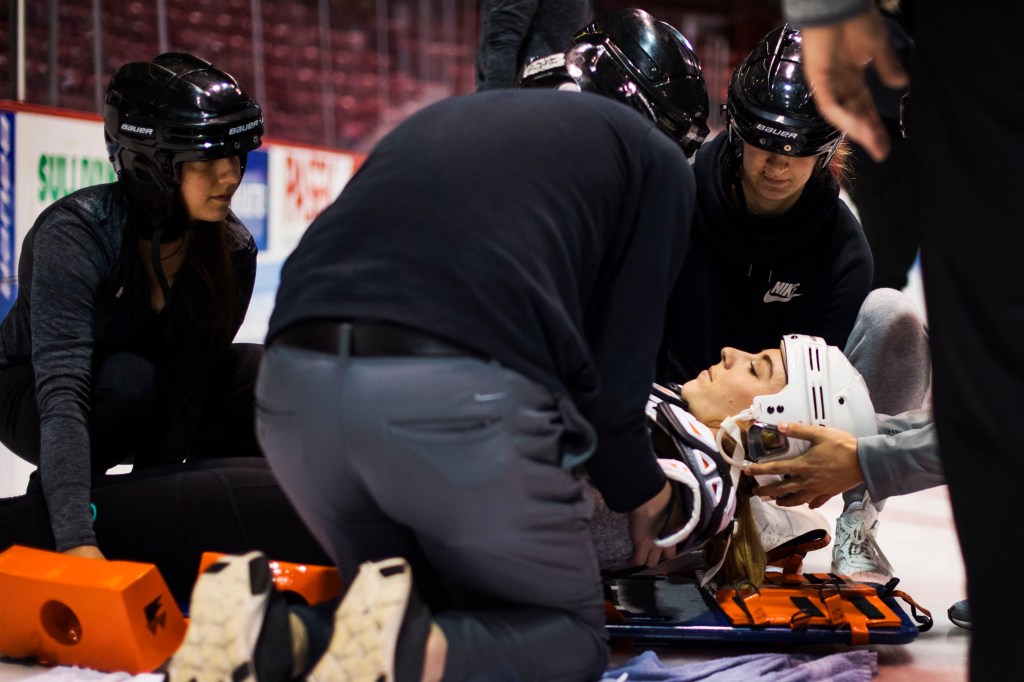
A student, wearing a hockey helmet and shoulder pads over her street clothes, lies face down on the ice at Matthews Arena. A small group of people cluster around her.
Nearby, Steve Clark, an assistant clinical professor in Northeastern’s Department of Physical Therapy, Movement, and Rehabilitation Science, guides another group in his lab on emergency care for athletes with spine injuries.
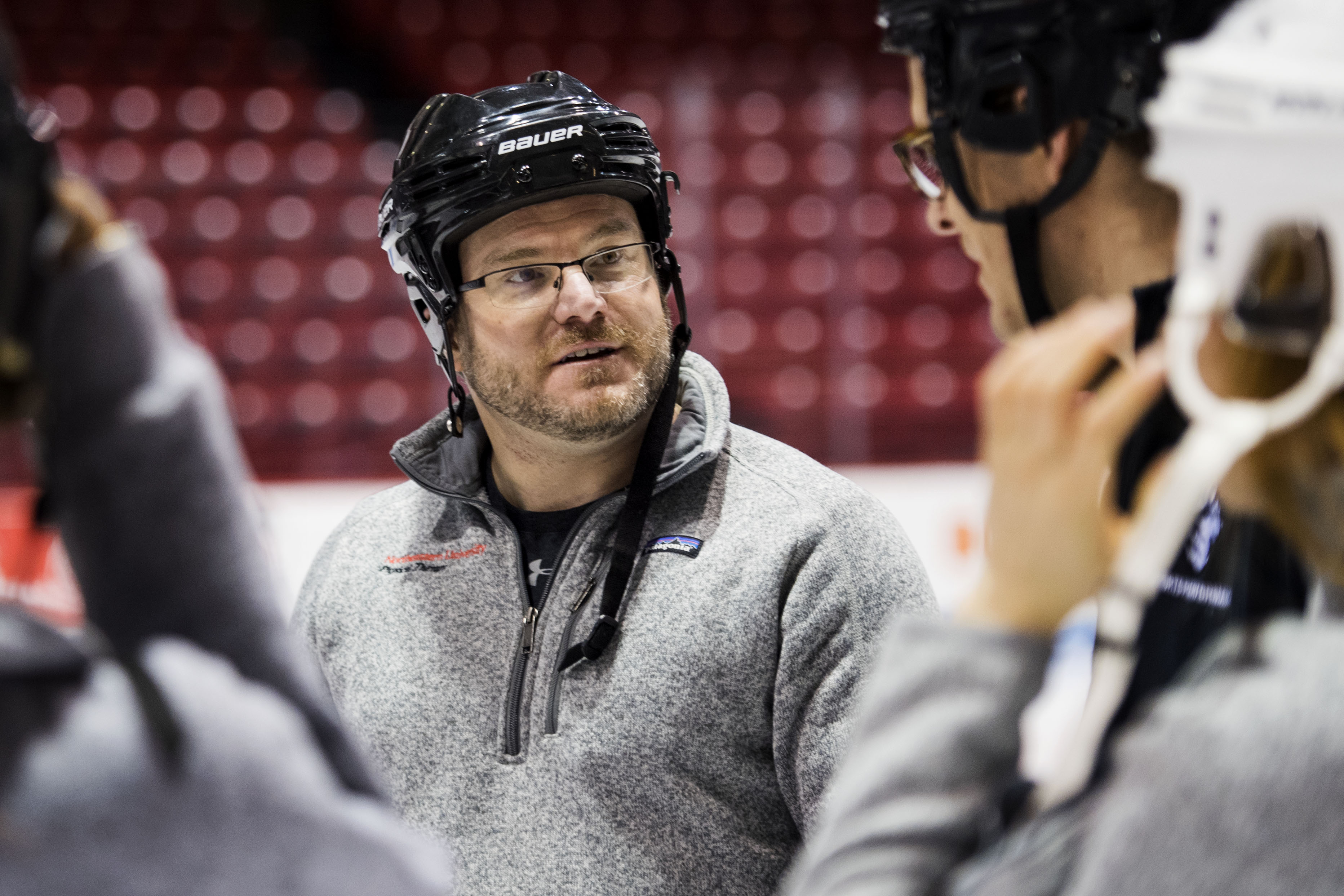
Photo by Adam Glanzman/Northeastern University
The lab provides hands-on training in stabilizing an injured athlete’s neck and spine so that they can be moved to a hospital safely. This includes strapping the patient to a spine board, a device designed to prevent a patient from moving and further injuring themselves.
“The ice is just another level of complication,” Clark says. “We have to practice it in that scenario.”
The lab is part of Clark’s sports medicine class, which is aimed at students getting their doctorate in physical therapy. But Clark also invites staff athletic trainers, sports physical therapy residents, sports medicine fellows from Boston Children’s hospital, and athletic training students from Boston University.
“When situations like this happen, we need everybody to help,” says Mike McKenney, Northeastern’s director of sports medicine, who came to watch the lab. “On unpredictable surfaces like ice, it is important to control movement of the injured athlete as much as possible when a potential spine injury is present. So the more people trained to help, the better.”
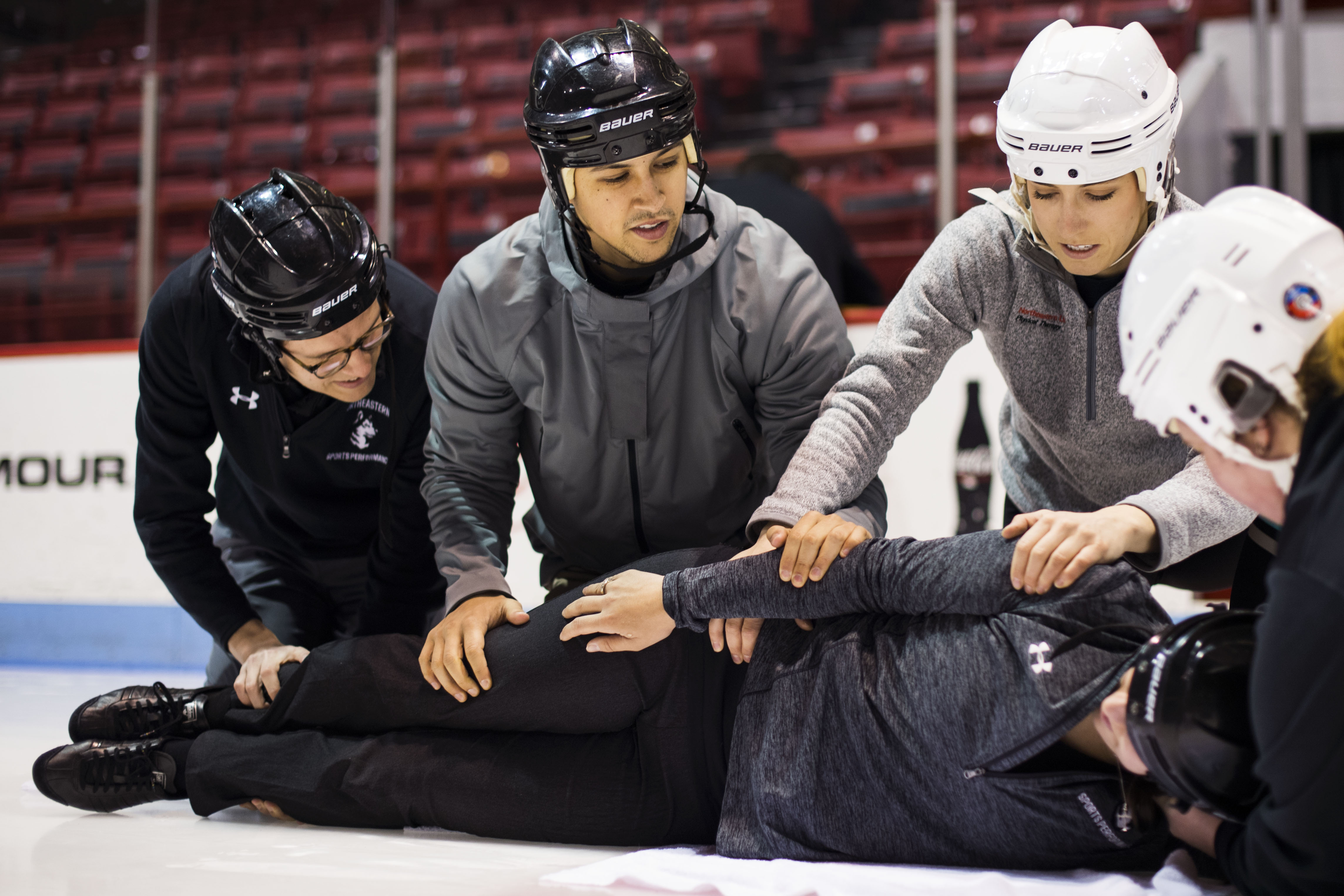
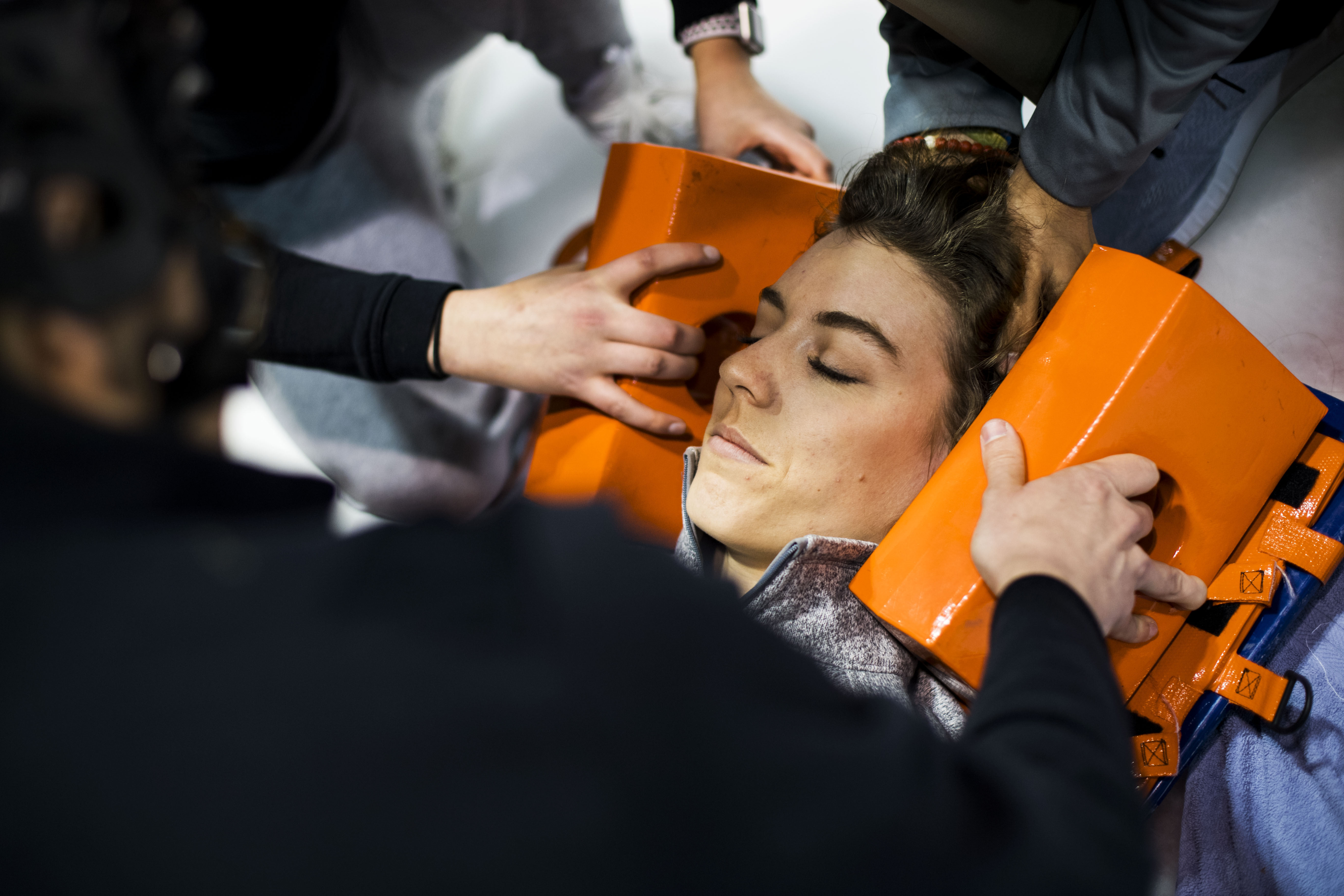
Clark uses this lab as an opportunity to show his physical therapy students how to be part of a sports medical team. Sports teams will often have physical therapists, athletic trainers, and strength and conditioning coaches working together with injured athletes to make the best decisions for their health and recovery. Clark spent eight years as an athletic trainer with Northeastern men’s hockey. Now, in addition to his faculty position, he works in the athletics department as the director of performance rehabilitation. He is perfectly positioned to bring these groups together.
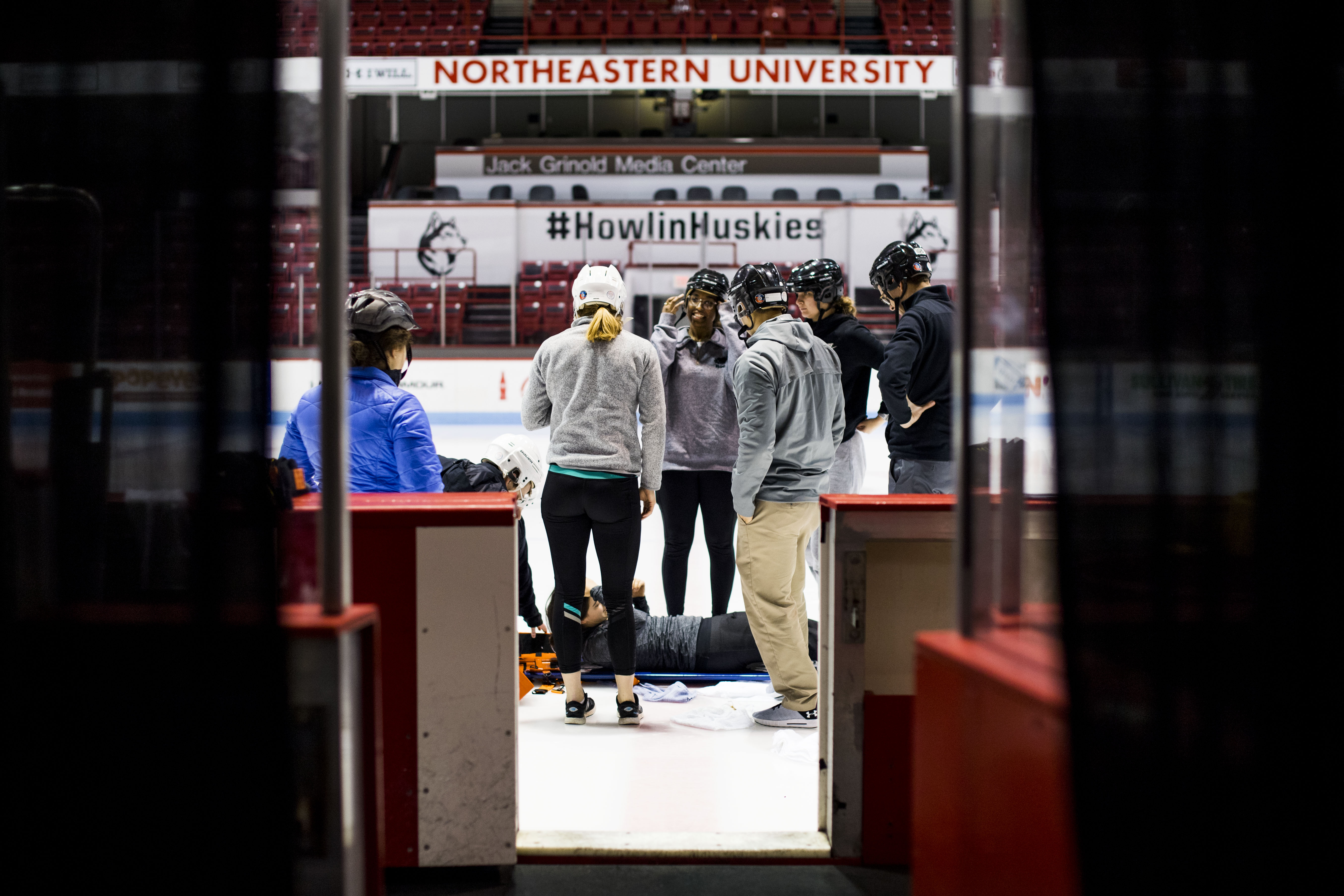
Photo by Adam Glanzman/Northeastern University
“I’m trying to get my physical therapy students exposure with the athletic training crowd and build relationships there,” Clark says. “The students get exposure to things they can’t get anywhere else.”
On the ice, the group prepares to move its patient to the spine board. The student steadying her head counts to three, and working together to keep her spine straight, the team rolls the patient onto her side. Two students position the spine board against the patient’s back, and with another count they lower her gently down.
“We have this really big multidisciplinary team practicing this one event that hopefully nobody ever has to do,” Clark says.
For media inquiries, please contact media@northeastern.edu.


